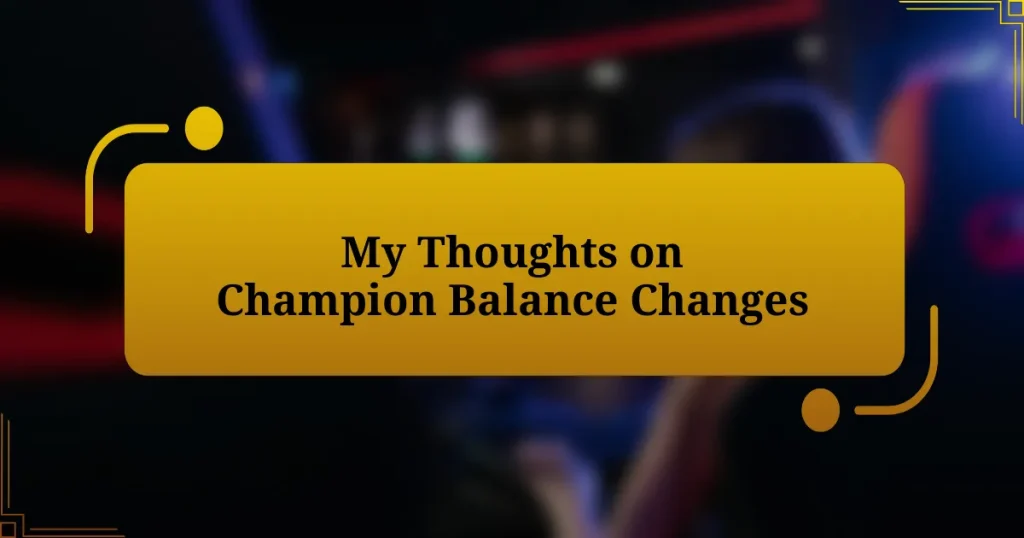Key takeaways:
- Champion balance changes in League of Legends are essential for fair gameplay and maintaining player engagement.
- Balance adjustments can significantly alter gameplay dynamics, requiring players to adapt their strategies and champion choices.
- Emotional connections to champions influence player experiences; balance changes can inspire creativity or discourage players.
- Future adjustments should consider flexible nerfs/buffs, shorter patch cycles, and increased champion diversity to enhance gameplay experience.
Author: Clara M. Ashford
Bio: Clara M. Ashford is an award-winning author known for her captivating literary fiction that explores the complexities of human relationships and the intricacies of personal identity. With a background in psychology and a passion for storytelling, Clara weaves rich narratives that resonate with readers on a profound level. Her debut novel, Whispers of the Heart, garnered critical acclaim and was shortlisted for the National Book Award. When she’s not writing, Clara enjoys hiking in the mountains of Colorado and volunteering at local literacy programs. She lives in Denver with her two adventurous dogs.

Overview of Champion Balance Changes
Champion balance changes in League of Legends are crucial for maintaining a competitive and enjoyable gameplay experience. I remember a time not too long ago when a particular champion felt overwhelmingly powerful in the meta, making matches frustrating for those on the receiving end. It drove home the point that balance isn’t just about numbers; it’s about ensuring everyone has a fair chance to shine.
These changes often stem from player feedback and data analysis, revealing how certain champions dominate the scene while others languish in obscurity. Have you ever wondered why some champions seem to fade in and out of favor? I’ve often felt that a well-timed buff or nerf can completely alter the landscape of gameplay, inspiring players to adapt their strategies and champion pools.
Sometimes, the most surprising balance changes come from unexpected champions, leading to new dynamics in the game. For instance, I remember the uproar when a seemingly minor adjustment to a champion’s abilities abruptly shifted their role in team fights. It’s moments like these that remind us how dynamic League of Legends is, keeping us on our toes and making every patch note feel like an exciting invitation to experiment and learn.
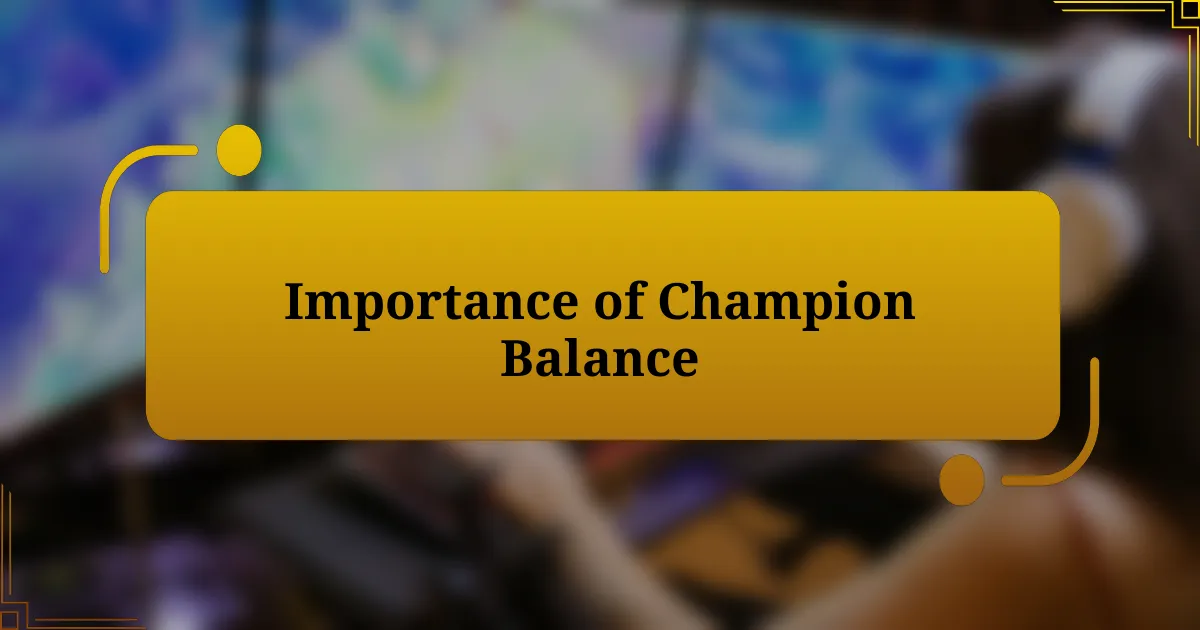
Importance of Champion Balance
Maintaining champion balance is vital for ensuring that every player feels they have a fighting chance in any match. I can still recall the thrill of playing a champion that had just seen a buff; it felt like unlocking a hidden potential within. Balancing champions isn’t just about stats; it’s the blending of skill, strategy, and creativity that keeps players engaged and invested.
Champion balance also impacts the overall health of the game’s ecosystem. When some champions are over-tuned, it can create a monoculture where players flock to the most powerful picks, leading to stale gameplay. I often find myself reflecting on previous metas where the diversity of champion picks dwindled, making ranked games feel predictable instead of unpredictable.
Finally, there’s an emotional connection we develop with champions. I’ve experienced the frustration of watching a beloved champion get nerfed and feeling a sense of loss, but also the excitement when they rise back up due to a well-placed balance change. This ebb and flow contributes to our attachment to the game. How could any of us forget the champions we’ve once mastered only to see them evolve over time? Each change not only affects gameplay but also our interaction with these virtual characters.
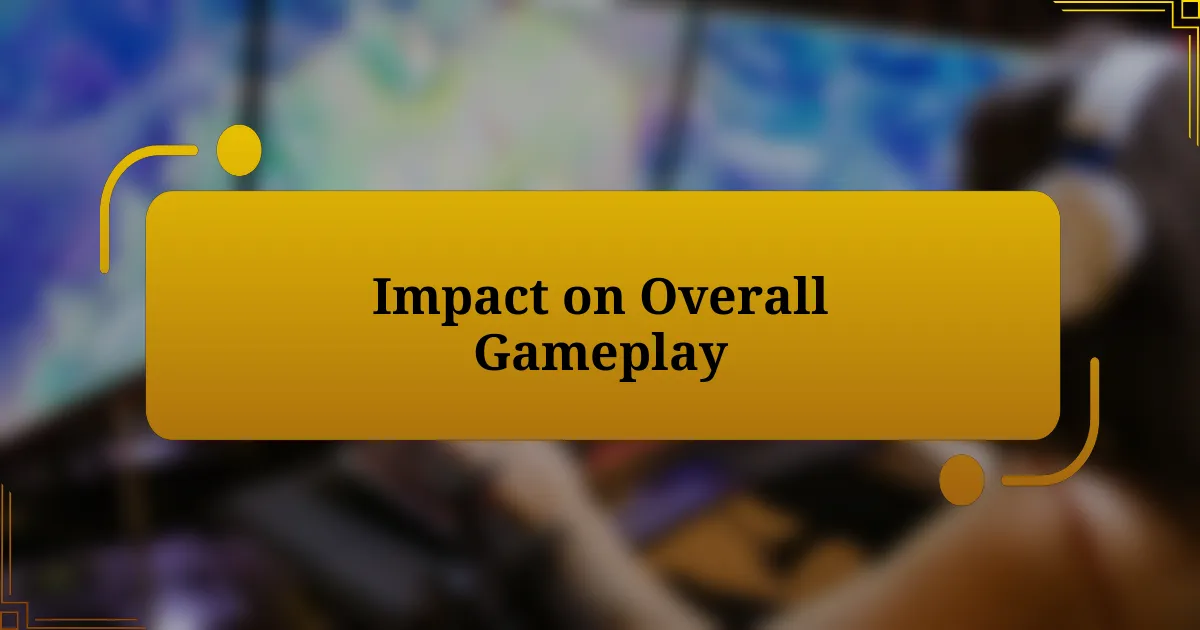
Impact on Overall Gameplay
The impact of champion balance changes can profoundly shift the dynamics of gameplay. I remember when a certain jungler received a significant buff; suddenly, every match felt like a race to secure that champion. The excitement in lobby discussions was palpable—everyone wanted to experiment, showcasing how impactful balance changes can invigorate gameplay.
Moreover, a well-timed nerf can completely alter a player’s strategy. For instance, I had grown attached to a mid-laner who thrived in high burst damage but was subsequently adjusted to be less effective. I had to reevaluate my approach, expanding my champion pool and adapting my tactics. It was a challenge, but it pushed me to develop as a player and think more creatively in different situations.
When balance changes happen, they often lead to an evolving meta where players must keep reinventing themselves. I find it fascinating how certain champions rise and fall like a tide, creating thrilling moments where former underdogs become dominant forces. Have you ever experienced the thrill of defeating a once-mocked champion now deemed top-tier? It’s these shifts that maintain the excitement and unpredictability in every match.
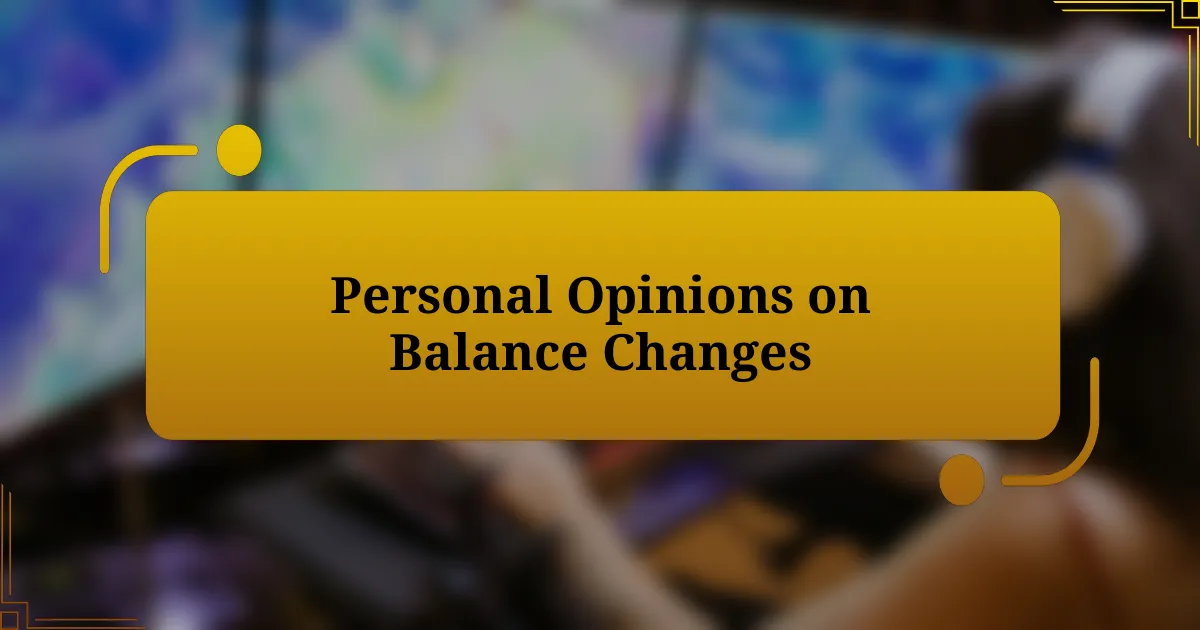
Personal Opinions on Balance Changes
The balance changes in League of Legends often make me reflect on my own playstyle and preferences. I vividly recall when a tank champion received substantial buffs—I found myself gravitating toward them, feeling invincible in team fights. It was a thrilling shift; suddenly, my role was no longer just to deal damage but to absorb it as well, reshaping how I approached each encounter.
I also think about the implications of these changes on player mentality. For instance, after a particular AD carry was hit with significant nerfs, I noticed how discouraged players became in matches. It’s like seeing someone’s favorite character in a movie suddenly portrayed as a villain. This emotional aspect of balance changes can’t be overlooked; they influence how we enjoy each game and interact with our teammates. How do you adapt when your go-to champion falls from grace?
Reflecting on my experiences, I’ve learned that balance changes can often spark a wave of creativity among players. There was a time when I picked up a supportive champion who had fallen off the radar after a series of nerfs. I felt like an explorer, uncovering new synergies and strategies in a game that was constantly evolving. Have you ever discovered a hidden gem among the lesser-played champions? These moments of realization remind me why I fell in love with League in the first place—it’s always about learning and experimentation, no matter the changes.
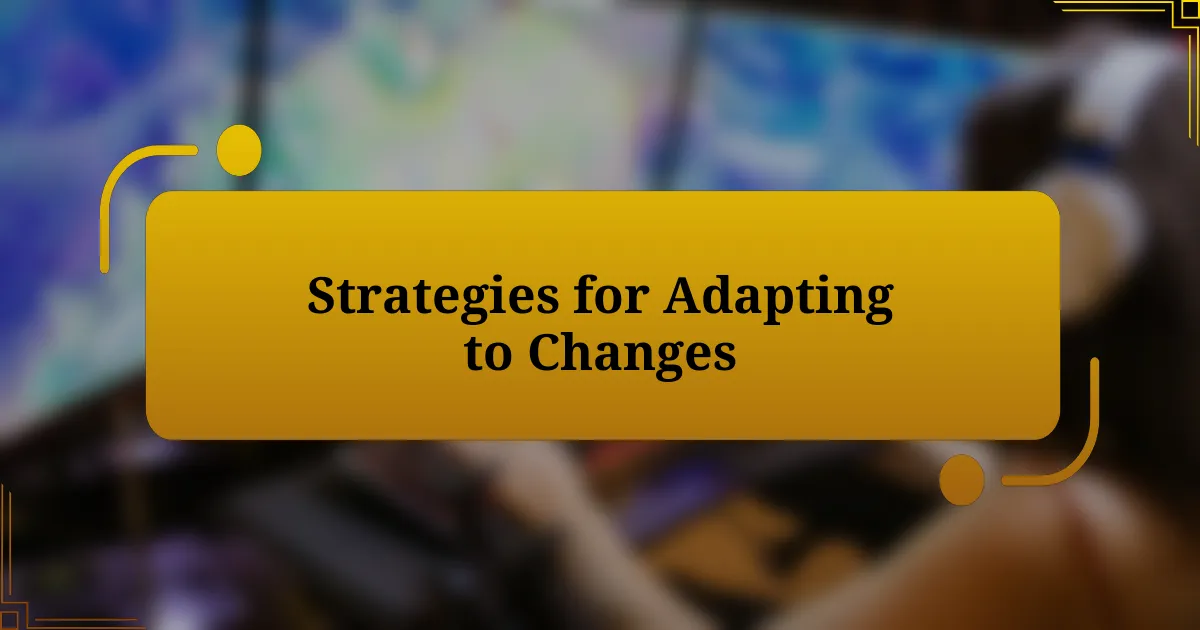
Strategies for Adapting to Changes
To adapt to balance changes effectively, I believe it’s crucial to analyze the new meta and adjust your champion pool accordingly. I remember when a previously strong jungler received a substantial nerf, leaving me in a bind. I took a step back and experimented with other champions, exploring their strengths and finding unexpected synergy that reignited my passion for the game.
Moreover, communication with teammates becomes essential during these transitions. I often find myself discussing strategies and preferences in champ select, sharing insights on adaptations we can all make. Have you ever had a game turn around simply because you coordinated your playstyle with the team? That sense of unity not only improves gameplay but also enhances the overall experience.
Lastly, I think embracing the mindset of a learner is key. I recall a time when a potent mid-laner was buffed, leading to a surge in popularity. Instead of shying away, I watched high-level gameplay, picking up on tactics and positioning I hadn’t considered before. Those moments remind me that every change is an opportunity—an open door to grow as a player and refine my skills. How do you view change in your gameplay?

Suggestions for Future Adjustments
When considering future adjustments to champion balance, I suggest a more flexible approach to nerfs and buffs. For instance, I once faced a situation where a champion I loved was nerfed heavily. Instead of despairing, I encouraged my friends to brainstorm alternatives together. Have you noticed how brainstorming can sometimes lead to discovering champions you might have never considered? This collaborative approach would definitely enrich the meta and provide fresh gameplay experiences.
Another idea is to implement shorter, more frequent patches instead of major overhauls. I recall the excitement I felt when Riot introduced incremental changes to certain champions, which kept the game feeling fresh and encouraged adaptation without overwhelming players. When there’s less time between patches, players can focus more on refining their skills and strategies with the champions they enjoy, rather than constantly adjusting to huge shifts.
Lastly, I think champion diversity should be a priority when making adjustments. I remember the days when a handful of champions dominated the competitive scene, and it felt stifling. Encouraging Riot to buff underplayed champions not only keeps the game balanced but also makes room for diverse strategies. It’s like adding more colors to a painting—the more variety, the more vibrant and engaging the game becomes. Can you imagine how exhilarating it is to see unexpected champions shine in professional play?











